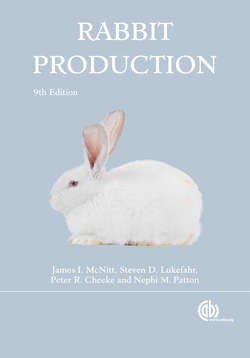Читать книгу Rabbit Production - James I McNitt - Страница 60
На сайте Литреса книга снята с продажи.
Fostering Young
ОглавлениеFrequently, does give birth to a larger number of young than they can nurse. It is good herd management to foster a doe’s excess kits to another doe with a smaller litter. In raising Angoras or rabbits for the meat market, there is a distinct advantage in reducing the size of a large litter to the number that the doe can develop uniformly. In the case of show rabbits it is especially important to reduce the litter even to four or five so that the young can have an opportunity to develop to the maximum of their inherited possibilities.
In order to distribute the transferred young for fostering, it is advisable when planning the breeding program to mate several does each breeding day so that several will kindle at about the same time. Each newborn litter should be inspected as soon as possible after the doe has quieted down following kindling, and a notation made of the number to be removed from or added to each litter. When all the does due at that time have kindled, the surplus young should be removed and permanently marked with a tattoo, ear punch, etc., so that the transferred young in each litter can be identified at weaning. If all the kits are to be marketed as fryers, identification may not be necessary.
When transferring the young it is not necessary to use any method for destroying the scent of the human hand or the scent of the dam of the young being transferred. Does do not make any distinction of young, even if they are of different colors or sizes (Fig. 5.13). Fostering is more successful if the largest kits are moved to the new doe and the smallest left with their mother.
Fig. 5.13. A Palomino doe nursing kits of a different breed. Does readily accept fostered kits even if they are of different sizes and breeds. (Courtesy of J.I. McNitt)
When selecting litters for fostering, it is advisable to watch carefully for any evidence of infection among the litters or does, as the transfer procedure could be a means for spreading disease. Under no circumstances should kits be fostered from a doe with mastitis to another doe, because the young can carry the bacteria and may infect the mammary glands of the foster mother.
